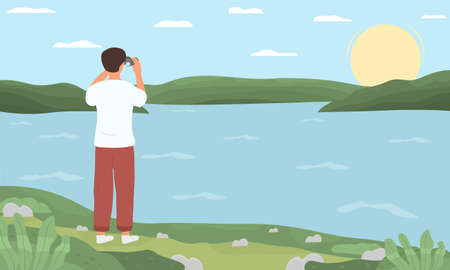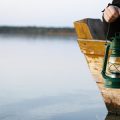The Role of Shore Fishing in UK Conservation Efforts
When we talk about conservation around Britains coastlines, shore fishing often gets overlooked. Yet, for many local anglers, casting a line from the beach, rocks, or harbour wall is more than just a pastime—it’s an opportunity to support the health of our seas. Shore angling is uniquely placed to contribute to conservation goals because it connects people directly with their local waters and the native species that call them home. By getting hands-on with whats living beneath the waves, anglers become passionate guardians of their favourite marks. Through simple actions—like recording catches, practicing catch and release, and respecting closed seasons—we can all play a part in protecting vulnerable stocks. After all, our local beaches and estuaries are nurseries for young fish and vital habitats for countless marine creatures. The more we care for these places, the richer the rewards for future generations of both fish and fishers.
2. Understanding Catch and Release: Techniques and Tips
When shore fishing around the UK, catch and release has become a cornerstone of conservation-minded angling. Its not just about letting fish go; it’s about ensuring they swim off strong and healthy so they can spawn another day. Here’s a practical look at how British anglers approach catch and release, from smart gear choices to tried-and-true handling techniques.
Choosing the Right Gear for Conservation
Your tackle plays a big role in the success of catch and release. Using barbless or circle hooks is highly recommended around our coasts—these are easier to remove and less likely to cause serious injury to fish. A medium-action rod paired with an appropriate line weight helps you land fish efficiently, reducing exhaustion and stress on the catch. Below is a quick guide to popular gear choices for responsible UK shore fishing:
| Gear Type | Recommended Option | Why It Matters |
|---|---|---|
| Hooks | Barbless/Circle | Easier removal, less injury |
| Landing Net | Knotless/Rubber Mesh | Minimises scale and slime damage |
| Rod & Line | Medium action, balanced line strength | Quicker landing, less stress on fish |
| Unhooking Tool | Long-nose pliers/Disgorger | Quick and safe hook removal |
Best Handling Practices on the British Shoreline
Caring for your catch starts as soon as you bring it ashore. Always wet your hands before touching any fish—this protects their delicate slime coat, which is essential for fighting off disease. If possible, unhook the fish while it’s still in the water or in a damp landing net. Keep them out of water for as short a time as possible (aim for under 30 seconds), especially during warm spells when oxygen levels are lower.
Steps for Safe Fish Handling:
- Wet your hands thoroughly.
- If using a mat or net, make sure it’s wet.
- Support the fish gently—avoid squeezing.
- If taking a photo, have everything ready beforehand.
- Use barbless hooks or a disgorger for easy release.
- Return the fish to the sea promptly, supporting it upright until it swims away under its own power.
The British Approach: Respect Every Catch
A true British angler takes pride in giving every fish, from schoolie bass to chunky wrasse, the best chance at survival. Whether you’re fishing rock marks in Cornwall or sandy stretches in Northumberland, these catch and release techniques keep our fisheries thriving for generations to come. Remember: every careful release is an investment in tomorrow’s sport—and that’s something we can all be proud of along our beautiful shores.
![]()
3. Choosing the Right Tackle for Responsible Angling
When it comes to shore fishing with conservation in mind, the kit you choose really does matter. Selecting the right hooks, lines, and bait can make a world of difference to our local saltwater species, ensuring they swim away unharmed and ready to fight another day. Here are some top tips and practical advice based on years spent casting off British shores.
Hooks: Go Barbless or Crush Your Barbs
Barbless hooks, or simply flattening the barb with a pair of pliers, are a cracking choice for catch and release. They do the job just as well when hooking your target species but make unhooking much quicker and less stressful for the fish. If you’re after bass, flatfish, or even wrasse along our coastlines, this simple switch massively reduces injury risk.
Line Selection: Lighter Isn’t Always Kinder
While it might seem gentle to use lighter lines, going too thin can actually extend the fight and exhaust the fish. Choose a line strength suited to your target species—strong enough to land them quickly, but not so heavy that it’s overkill. For most UK shore fishing sessions, 12–20lb mono or braid covers a range of situations without putting unnecessary strain on fish or tackle.
Bait Choices: Keep It Local and Natural
Using fresh, locally sourced bait is not only more effective but also better for our marine environment. Avoid bringing in non-native baits that might introduce diseases or parasites. Lugworm, ragworm, peeler crab, and mackerel strips are top choices around British shores—and they help ensure any released fish aren’t affected by unfamiliar substances.
Final Thoughts on Responsible Tackle
Your tackle choices speak volumes about your respect for the sea and its creatures. By picking barbless hooks, balanced lines, and native baits, we can all play our part in keeping our favourite marks thriving for future generations of anglers to enjoy.
4. Local Guidelines and Legal Requirements
If you’re keen to do your bit for conservation while enjoying shore fishing around the UK, it’s absolutely essential to get clued up on local guidelines and legal requirements. These regulations are in place not just to protect fish stocks but also to ensure that our hobby remains sustainable for generations to come. Whether you’re casting off the rocks in Cornwall or dropping a line from a Northumberland pier, being aware of the rules is part and parcel of responsible angling.
Key UK Regulations Every Shore Angler Should Know
The UK has a patchwork of national and regional byelaws designed to safeguard marine life. One of the most important aspects is understanding minimum landing sizes and closed seasons for certain species. These measures help prevent overfishing and give fish populations a chance to recover and thrive.
Minimum Landing Sizes
To protect juvenile fish, you must not retain any fish below the minimum landing size (MLS) set for each species. Here’s a quick table featuring some of the most common shore-caught species and their MLS:
| Species | Minimum Landing Size (cm) |
|---|---|
| Bass | 42 |
| Cod | 35 |
| Mackerel | No MLS (but local limits may apply) |
| Pollack | 30 |
| Whiting | 27 |
| Plaice | 27 |
| Smoothhound (starry/common) | No MLS (catch & release encouraged) |
(Note: Always check local IFCA byelaws as these may vary by region.)
Closed Seasons and Bag Limits
Certain fish species have closed seasons, meaning you can’t target them during specific periods—this protects them during spawning times. For instance, bass fishing is prohibited between 1 February and 31 March along much of the English coast. In addition, bag limits restrict how many fish of certain species you can keep per day, helping to prevent over-exploitation.
Essential Reminders for Responsible Shore Anglers:
- Always check signage at fishing spots for local rules.
- Consult your local Inshore Fisheries and Conservation Authority (IFCA) website before heading out.
- If in doubt, practise catch and release!
- Report any illegal fishing activity to authorities—every angler plays a part in conservation.
Tuning in to these local rules isn’t just about staying on the right side of the law; it’s about respecting our shared waters and making sure there are plenty of fish for everyone—now and in years to come.
5. Respecting Wildlife and the Shoreline
If you’re a regular on British shores, you’ll know there’s more to fishing than just casting your line – it’s about looking after our wild coastline too. Keeping our beaches pristine is every angler’s responsibility, and it all starts with simple, thoughtful actions that protect both wildlife and the habitats we love.
Take Your Rubbish Home
One of the easiest ways to make a difference is by taking all your litter home. Discarded tackle, bait packaging, and even sandwich wrappers can cause real harm to local birds, seals, and marine life. Bring a spare bag for your rubbish (and any you spot left behind by others), and make leaving no trace part of your fishing routine.
Mind the Sensitive Spots
British coastlines are dotted with delicate habitats – think sand dunes, salt marshes, and rocky pools. Treading carefully through these areas and sticking to established paths helps prevent erosion and protects breeding grounds for wading birds and rare plants. If you see signs marking protected zones, give them a wide berth.
Why It All Matters
Respecting wildlife and the shoreline isn’t just about following rules – it’s about safeguarding the future of our favourite fishing spots. When beaches are clean and habitats healthy, fish stocks thrive and so does the wider ecosystem. Plus, a tidy beach makes for a much nicer day out for everyone, whether you’re there for a quick session or an all-day adventure.
So next time you head out with rod in hand, remember: every little bit helps. Whether you’re picking up stray bits of plastic or keeping clear of nesting birds, you’re playing your part in keeping Britain’s wild coast as special as ever – not just for anglers today but for generations to come.
6. Sharing the Spirit: Engaging Community and Inspiring Others
If there’s one thing better than enjoying a session of responsible shore fishing, it’s sharing that experience with others—especially mates, youngsters, and folks from the local community. In the UK, fishing has always been about more than just catching; it’s about camaraderie, the odd bit of banter on the shingle, and learning from each other. Here are some ideas for getting everyone involved in conservation-minded angling, while keeping it fun and meaningful.
Organise a Shore Clean & Fish Day
Why not gather your mates for a morning of beach cleaning followed by an afternoon’s fishing? Not only does this help keep our favourite marks litter-free, but it’s also a brilliant way to show that anglers care for their environment. Many hands make light work, and you’ll be surprised how much rubbish you can shift with a group. Afterwards, you can swap stories over a cuppa or even a chippy tea—proper British style!
Encourage Youngsters to Get Involved
Introducing the next generation to shore fishing is key for the future of our sport—and our seas. Make it welcoming: keep sessions short and lively, use easy-to-handle tackle, and focus on the thrill of the catch (and release). Teach them why we unhook carefully, use barbless hooks when possible, and return fish gently. Make it fun with little competitions or fish ID games. A few jelly babies or chocolate digestives never go amiss either!
Community Taster Events
Team up with your local angling club or community centre to run taster sessions open to all. These are cracking opportunities for newcomers to learn about responsible practices in a friendly setting. You could invite local experts to give quick demos on handling fish safely or even arrange talks on marine conservation.
Share Your Stories—Online & Off
Whether it’s through social media groups, WhatsApp chats or simply chatting down at the bait shop, sharing your experiences helps spread good practice far and wide. Post photos (always of safe fish handling!), share tips, or write up your own session reports. You never know who you might inspire to pick up their rod—or improve their approach to catch and release.
Make Conservation Part of the Fun
Add an extra twist to your next group outing by challenging everyone to spot wildlife or record species caught (and released). You could even log catches for citizen science projects like Anglers’ National Line Recycling Scheme or Shark Trust eggcase hunts. It’s all about showing that looking after our waters makes fishing better for everyone.
By making conservation a natural part of our shared angling adventures—from teaching kids to swapping stories on the pier—we help ensure there’ll be plenty of fish (and great memories) for years to come. So grab your mates, get out there, and let’s show everyone what responsible shore fishing is all about!


